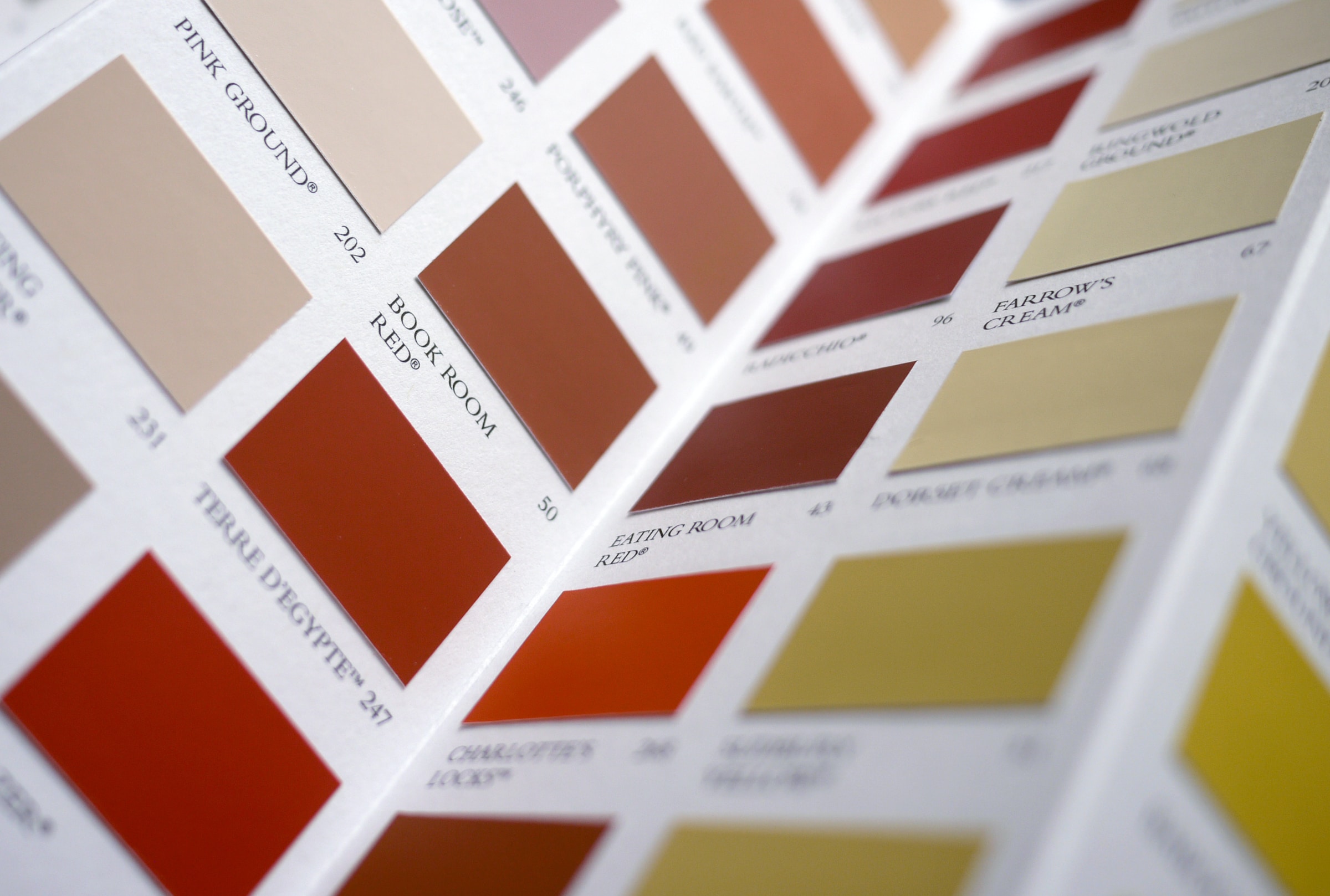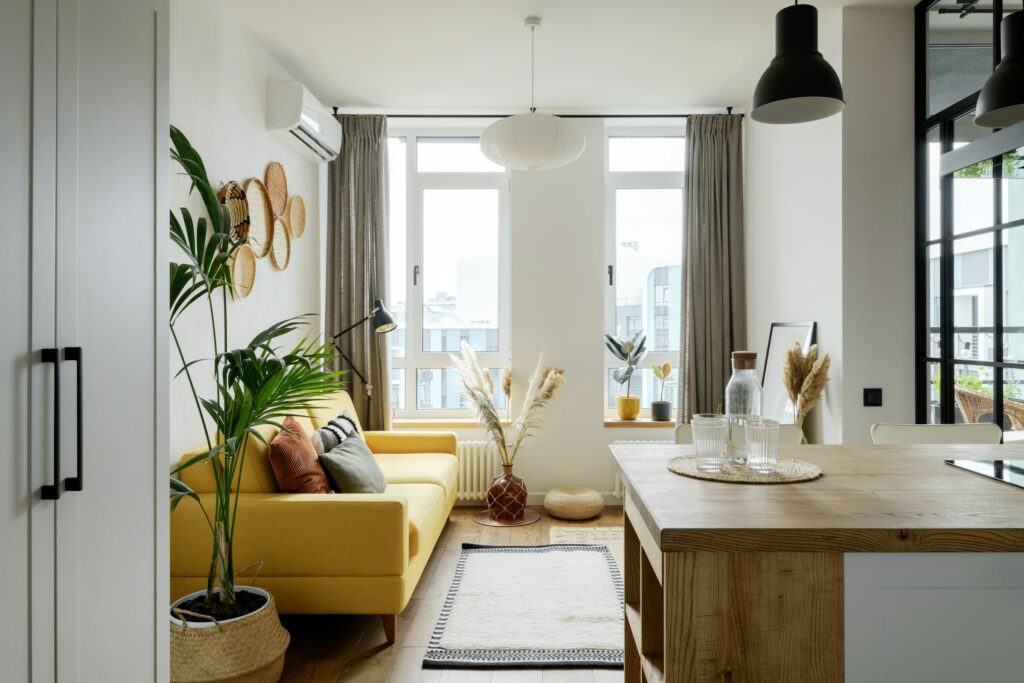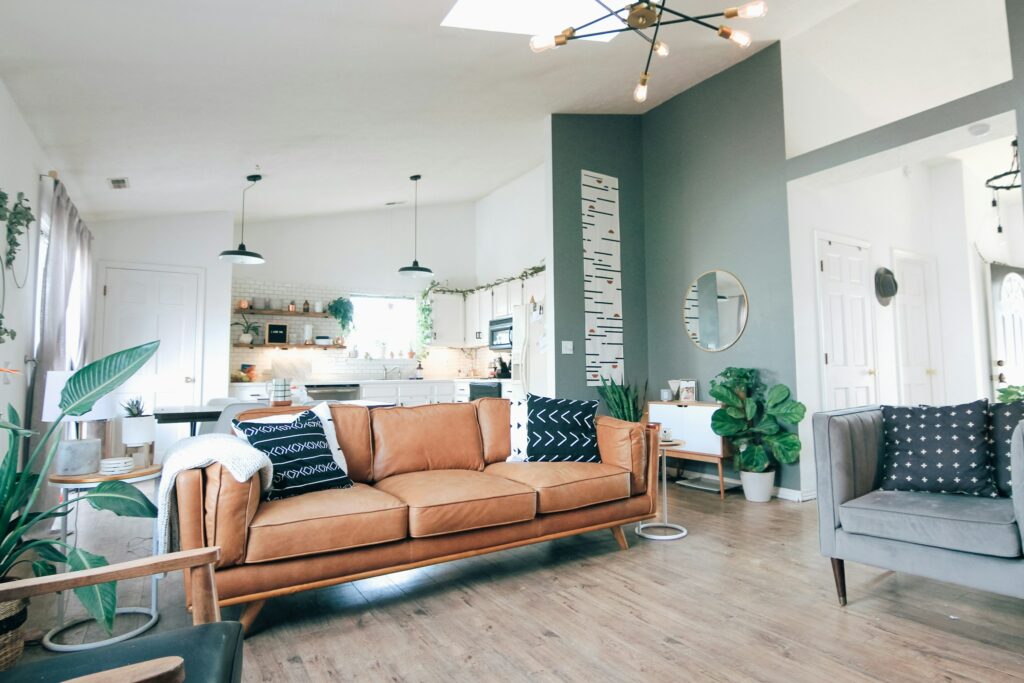Choosing the perfect paint colour for your home can be exciting and challenging. With the many colours, shades, and tones available, it can be overwhelming to decide on the right hue for each room. In this article, we will guide you through the various aspects to consider when selecting paint colours for your home, ensuring that you create an inviting and personalised living space.
In today’s world, your home is not just a place to live but also a reflection of your unique style and personality. The colours you choose for your walls are vital in setting the atmosphere and influencing your mood. In this comprehensive guide, we will explore the various aspects of colour psychology, perception, and theory to help you make an informed decision when choosing a paint colour for your home.

Understanding Colour Psychology and Perception
Colour psychology explores how different hues affect our emotions and behaviours. For example, warm colours like red and yellow can evoke feelings of excitement, while cool colours like blue and green can create a calming and serene atmosphere.
In addition to colour psychology, it’s crucial to consider human colour perception when selecting paint colours. This involves understanding how people perceive colours in relation to their surroundings, including lighting conditions and adjacent colours on walls and furniture.
Practical Application of Colour Theory
Colour theory is a set of principles that can be applied strategically when selecting paint colours for your home. Some key concepts include:
- Colour Wheel: A circular diagram representing the relationships between different colours. It can help identify complementary and contrasting colours that work well together.
- Complementary Colours: Colours that are opposite each other on the colour wheel, such as red and green or blue and orange, create a strong contrast and can make a room appear vibrant and energetic.
- Triadic Schemes: These schemes are visually balanced and harmonious, composed of three colours evenly spaced around the colour wheel.
When applying colour theory, consider practical elements like the size of the room, lighting conditions, and architectural features. Smaller rooms, for instance, can benefit from lighter hues to create the illusion of more space.
Tools and Resources for Paint Colour Selection
Several helpful tools and resources can assist you in selecting the ideal paint colour for your home:
- Digital Paint Apps: Many paint companies, such as Dulux and Farrow & Ball, offer digital tools that allow you to upload a photo of your room and visualise it with different paint colours.
- Colour Swatches and Sample Pots: Purchase small sample pots and paint swatches to test colours in your home. This will better understand how a paint colour will appear in different lighting conditions.
- Pinterest-Houzz: Platforms like Pinterest and Houzz offer a wealth of inspiration for paint colours and interior design.
Tips on Testing and Finalising Paint Colour Choices
Before committing to a specific paint colour, heed the following tips and advice:
- Consult with Professionals: Professional interior designers can provide valuable insights and advice on selecting the perfect paint colour.
- Test Colours: Paint small areas of your wall with your chosen colour and observe it under different lighting conditions and at different times of the day. This will help you evaluate if the chosen hue is right for your space.
- Consider Your Furnishings: Remember to consider the colours of your furniture, curtains, and other decorative elements when selecting a paint colour.
How to Choose the Right Paint Finish for Your Walls?
Selecting the right paint finish (also known as sheen) for your walls is crucial, as it affects the overall appearance and durability of the paint. There are several paint finishes to choose from, each with its own unique properties:
- Matt: Ideal for hiding imperfections on walls, matt finish gives a subtle, elegant appearance to a room. However, it is less durable and less resistant to stains and moisture.
- Eggshell: With a slight sheen, the finish is more durable than matt paint and easier to clean. It works well for living rooms and bedrooms.
- Satin: Offering a smooth and velvety sheen, satin paint is more resilient than eggshell and ideal for high-traffic areas such as hallways, kitchens, and bathrooms. It is moisture-resistant and easy to clean.
- Semi-gloss: Durable and easy to clean, semi-gloss paint has a pronounced sheen and is suitable for moist areas, such as kitchens and bathrooms. It also works well for woodwork and trim.
- Gloss: With the highest sheen level, gloss paint is highly durable and ideal for areas that require frequent cleanings, such as doors, windows, and trim. It can accentuate imperfections, so ensure the surface is properly prepared.
Consider the room’s function, the wall’s surface condition, and your preferred aesthetics when choosing a paint finish.
What are Some Common Mistakes to Avoid when Choosing Paint Colours?
Avoid these common mistakes when selecting paint colours:
- Ignoring the room’s function: Consider the purpose and layout of a room before choosing a colour. For example, calm and relaxing hues work best in bedrooms, while energetic colours are suitable for social spaces like living rooms.
- Relying solely on paint chips: Paint chips may not accurately represent how a colour will look on walls. Test colours using sample pots and swatches to see how they look under different lighting conditions and against furnishings.
- Overlooking the impact of existing elements: Account for your room’s existing furniture, fixtures, and flooring when selecting paint colours. These elements can influence the overall colour scheme.
- Not considering the paint finish: Different paint finishes reflect light and wear differently. Consider the appropriate finish for the intended room and surface.
Frequently Asked Questions:
Can I change a room’s colour from dark to light or vice versa?
Yes, you can change a room’s colour from dark to light or vice versa. However, this sometimes requires additional preparation and painting steps:
From dark to light: Firstly, apply a high-quality primer to the walls, mainly when covering very dark colours. This will prevent the old stain from bleeding through. Apply multiple coats of lighter paint to achieve the desired coverage and depth.
From light to dark: No primer is typically needed when covering a light colour with a darker one. However, you may need to apply multiple coats of the darker paint to achieve a uniform appearance and desired depth.
Conclusion: Choosing a paint colour for your home
Choosing the perfect paint colour for each room in your home can be a fulfilling and enjoyable experience. By understanding colour psychology, applying colour theory, and using available tools and resources, you can create a harmonious and personalised living space that reflects your unique style and personality.
Remember to take your time, experiment with different colours, and trust your instincts to achieve the perfect balance of style and comfort in your abode.









